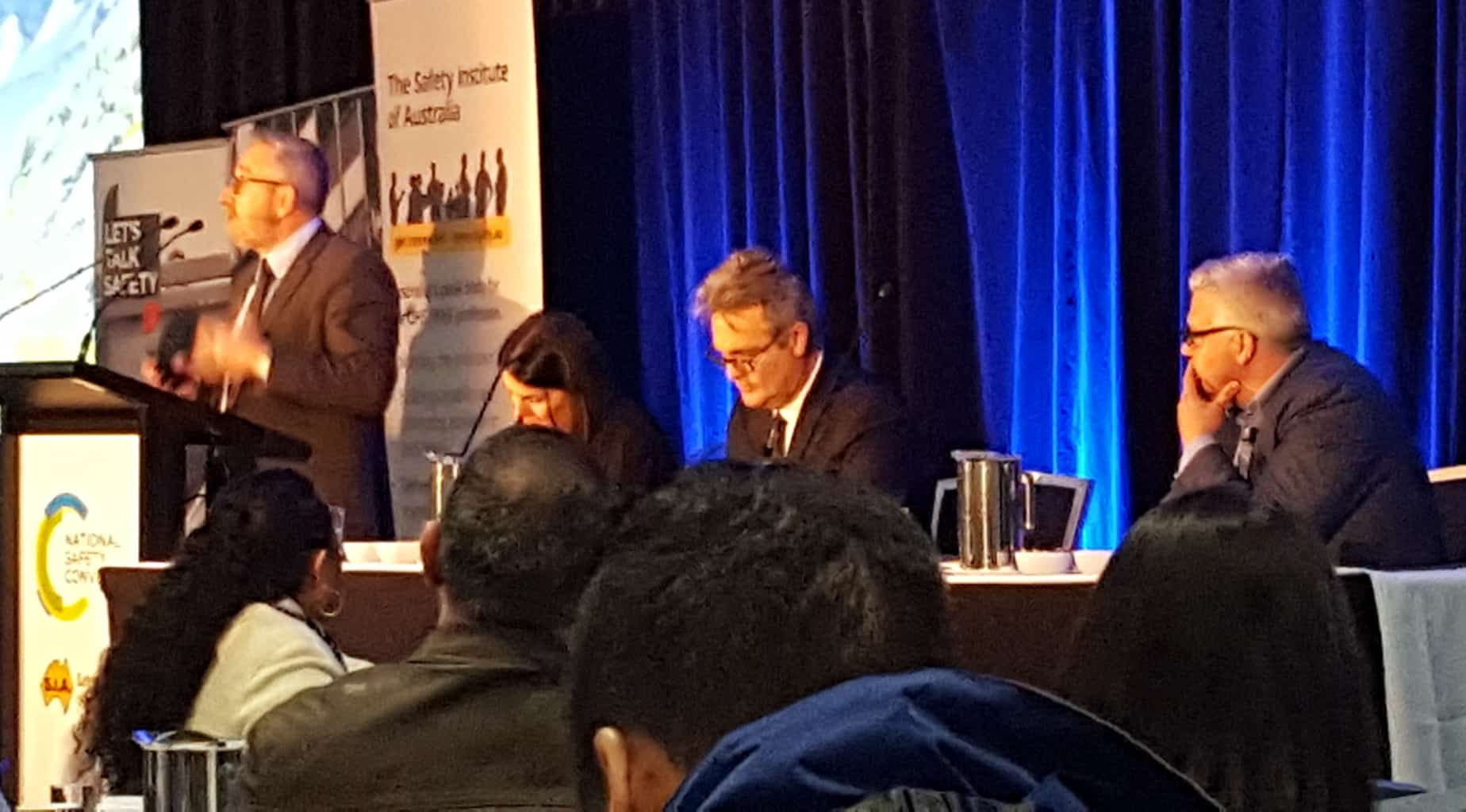The Safety Institute’s National Convention was given a youthful injection this morning by the presentation of Dr Jason Fox (pictured below, with beard). He challenged our thinking and our occupational health and safety (OHS) future, even though the sound quality was not as good as it could be leading to some of his words being missed.
 One of the most visible changes in this conference is the presence of women on the speaker panels. Each of these panels has illustrated and reinforced the need to change from the usually safety conference speakers, who are experts and important to listen to, away from the male-based (but changing) stereotype of the safety profession to which many speakers have referred. The SIA is trying to provide gender diversity but it, like so many other organisations, is not there yet in its transition from old to new and from past to future.
One of the most visible changes in this conference is the presence of women on the speaker panels. Each of these panels has illustrated and reinforced the need to change from the usually safety conference speakers, who are experts and important to listen to, away from the male-based (but changing) stereotype of the safety profession to which many speakers have referred. The SIA is trying to provide gender diversity but it, like so many other organisations, is not there yet in its transition from old to new and from past to future.
Panel member Jen Jackson (pictured) was not included as a speaker but she showed enough thoughtful contribution and personality that a presentation on safety communication would have been useful. She complemented the speakers and panel well and her response to her exposure to the safety profession would have generated a fresh external perspective.
I have written before that I think some speakers, experts and academics should be read rather than heard. Dr Fox is a vibrant speaker but twenty minutes, as Drew Rae has pointed out in a comments sections of this blog, does not allow nuance, discussion or debate. I have read some of Dr Fox’s GameChanger book and that media format allows for reflection and thought but try to see Dr Fox present on change first. He is a terrific multimedia knowledge package..
I can’t blog about the content of the second conference session as I need to listen back to it so as not to simply reiterate the talking points and audio grabs. But this session was lively and benefited from the mix of expertise from Andrew Hopkins, Jason Fox, Peter Baines, Siobhan Flores-Walsh and Jen Jackson.


